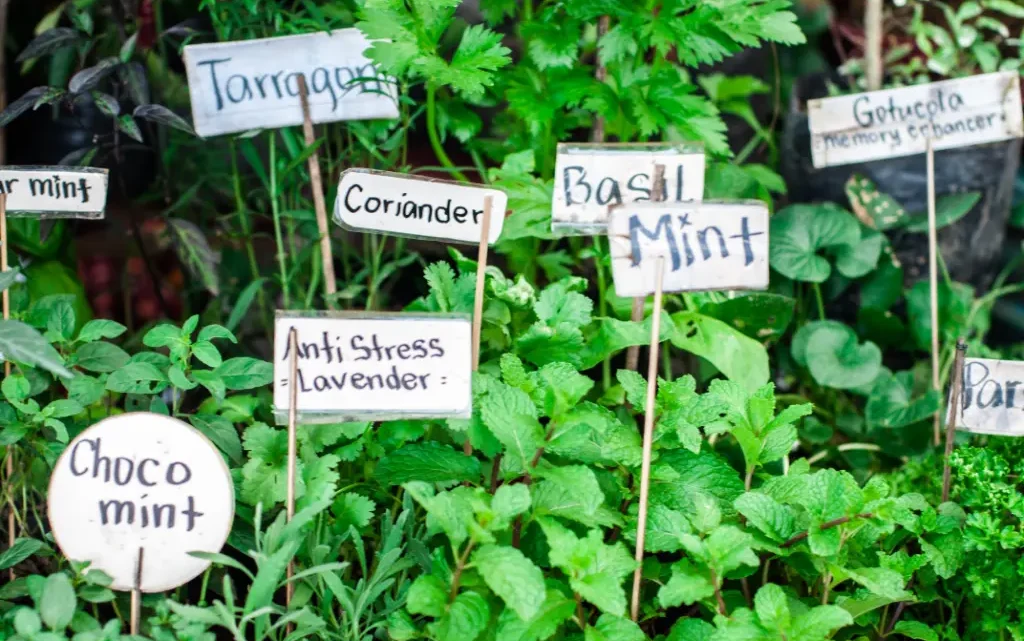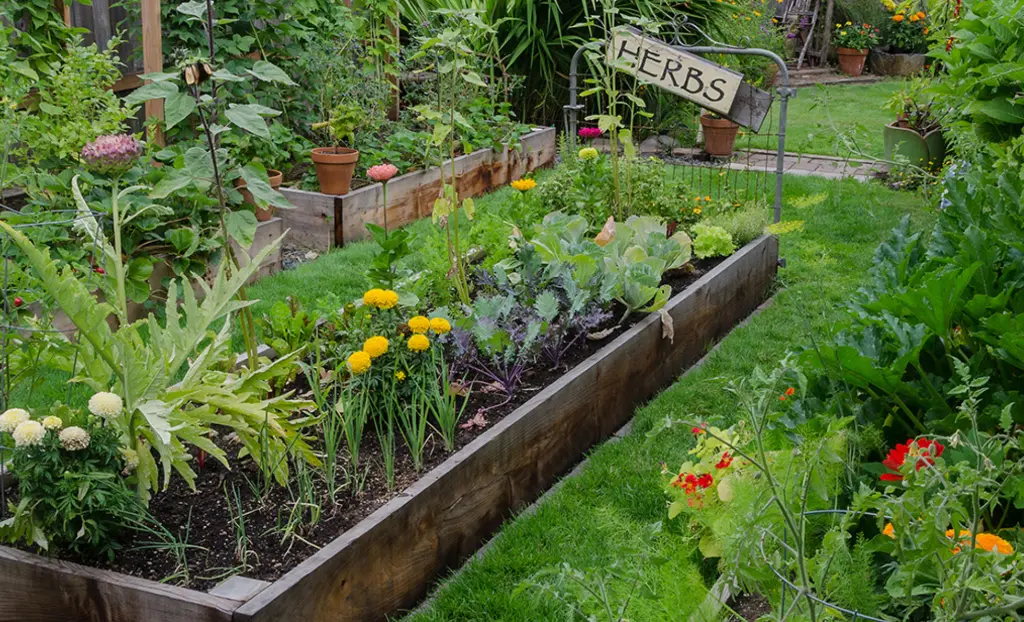
Creating a home herb garden is an excellent way to have fresh, organic herbs at your fingertips. Whether you have a spacious backyard or a small apartment balcony, you can grow a variety of herbs that will enhance your culinary creations and provide medicinal benefits. In this guide, we will walk you through everything you need to know to start your own herb garden, from choosing the right herbs to maintaining your garden year-round.
Benefits of Growing Your Own Herbs

Before diving into the how-to, let’s discuss why growing your own herbs is beneficial:
- Freshness: Home-grown herbs are fresher than store-bought ones, which often lose their flavor during transportation.
- Cost-Effective: Growing herbs at home is cheaper in the long run compared to constantly buying them.
- Healthier Options: You control the use of pesticides and fertilizers, ensuring your herbs are organic and healthy.
- Convenience: Having herbs at your fingertips means you can quickly add flavor to your dishes without a trip to the store.
- Therapeutic: Gardening is a relaxing and rewarding hobby that can improve mental health.
Choosing the Right Herbs
The first step in creating a home herb garden is choosing the herbs you want to grow. Here are some popular options:
- Basil: Ideal for Italian dishes, salads, and pesto.
- Thyme: Perfect for seasoning meats, soups, and stews.
- Rosemary: Great for roasted meats and potatoes.
- Mint: Excellent for teas, desserts, and cocktails.
- Cilantro: Essential for salsa, guacamole, and many Asian dishes.
- Parsley: A versatile herb used in a variety of cuisines.
Seasonal Planting Guide
Here’s a handy seasonal guide to help you manage your herb garden throughout the year:
| Herb | Jan | Feb | Mar | Apr | May | Jun | Jul | Aug | Sep | Oct | Nov | Dec |
|---|---|---|---|---|---|---|---|---|---|---|---|---|
| Basil | Yes | Yes | Yes | Yes | Yes | Yes | Yes | Yes | ||||
| Thyme | Yes | Yes | Yes | Yes | Yes | Yes | Yes | Yes | ||||
| Rosemary | Yes | Yes | Yes | Yes | Yes | Yes | Yes | Yes | ||||
| Mint | Yes | Yes | Yes | Yes | Yes | Yes | Yes | Yes | ||||
| Cilantro | Yes | Yes | Yes | Yes | Yes | Yes | Yes | Yes | ||||
| Parsley | Yes | Yes | Yes | Yes | Yes | Yes | Yes | Yes |
Preparing Your Garden Space
Choosing the Location
The location of your herb garden is crucial for its success. Most herbs need 6-8 hours of sunlight per day, so choose a spot that gets ample sunlight. If you’re limited to indoor gardening, place your herbs near a sunny window or use grow lights.
Soil Preparation
Herbs thrive in well-drained soil rich in organic matter. Here’s how to prepare your soil:
- Test the pH: Herbs prefer a slightly acidic to neutral pH (6.0 to 7.0). You can test your soil using a pH testing kit.
- Improve Drainage: If your soil is heavy clay, improve drainage by adding organic matter like compost or aged manure.
- Nutrient Boost: Mix in a balanced, slow-release fertilizer to provide essential nutrients.
Planting Your Herbs
Starting from Seeds vs. Transplants
You can start your herb garden from seeds or transplants. Here are the pros and cons of each method:
- Seeds:
- Pros: Cheaper, more variety, and rewarding.
- Cons: Takes longer to grow and requires more care initially.
- Transplants:
- Pros: Faster harvest and easier for beginners.
- Cons: More expensive and limited variety.
Planting Seeds
- Sowing Indoors: Start seeds indoors 6-8 weeks before the last frost. Use seed trays or small pots with a light, well-draining seed starting mix.
- Germination: Keep the soil moist and place the trays in a warm, sunny location. Most herb seeds germinate in 7-14 days.
- Transplanting: Once seedlings have 2-3 sets of true leaves, they can be transplanted outdoors. Harden them off by gradually exposing them to outdoor conditions.
Planting Transplants
- Spacing: Follow the spacing recommendations on the plant tag or seed packet. Generally, herbs need 12-18 inches between plants.
- Planting: Dig a hole slightly larger than the root ball. Place the transplant in the hole, fill with soil, and gently firm around the base.
- Watering: Water thoroughly after planting to help the roots settle.
Caring for Your Herb Garden
Watering
Consistent watering is key to healthy herbs. Here are some tips:
- Frequency: Water herbs deeply once or twice a week, depending on weather and soil conditions.
- Morning Watering: Water in the morning to reduce evaporation and prevent diseases.
- Mulching: Apply a layer of mulch to retain moisture and suppress weeds.
Fertilizing
While herbs don’t require heavy feeding, a little boost can promote growth:
- Organic Fertilizers: Use compost, fish emulsion, or worm castings.
- Frequency: Fertilize every 4-6 weeks during the growing season.
Pruning and Harvesting
Regular pruning keeps herbs healthy and encourages bushy growth:
- Pruning: Remove dead or yellowing leaves and trim back leggy stems.
- Harvesting: Pick herbs in the morning when their essential oils are at their peak. Cut back to just above a leaf node to promote regrowth.
Pests and Diseases
Herbs are generally resilient, but they can still fall prey to pests and diseases:
Common Pests
- Aphids: Small, green or black insects that suck sap from plants.
- Spider Mites: Tiny, red or black insects that create webs on the undersides of leaves.
- Whiteflies: Small, white insects that fly up when disturbed.
Common Diseases
- Powdery Mildew: White, powdery fungal growth on leaves.
- Root Rot: Caused by overwatering, leading to mushy roots and yellowing leaves.
- Downy Mildew: Yellow spots on leaves with a grayish fuzz underneath.
Natural Remedies
- Insecticidal Soap: Effective against aphids and spider mites.
- Neem Oil: A natural pesticide that works against a variety of pests.
- Companion Planting: Plant herbs like basil and marigold to repel pests.
Extending the Growing Season
Indoor Herb Gardening
If you want fresh herbs year-round, consider indoor gardening:
- Containers: Use pots with drainage holes.
- Lighting: Place near a south-facing window or use grow lights.
- Watering: Indoor plants dry out faster, so check soil moisture regularly.
Preserving Herbs
To enjoy your herbs in the off-season, preserve them:
- Drying: Hang herbs upside down in a dark, well-ventilated area.
- Freezing: Chop herbs and freeze in ice cube trays with water or olive oil.
- Herb Butter: Mix chopped herbs with softened butter and freeze.
Troubleshooting Common Problems
Yellowing Leaves
- Causes: Overwatering, nutrient deficiency, or pests.
- Solution: Adjust watering, fertilize appropriately, and check for pests.
Leggy Growth
- Causes: Insufficient light or lack of pruning.
- Solution: Provide more light and prune regularly.
Slow Growth
- Causes: Poor soil, low temperatures, or lack of nutrients.
- Solution: Improve soil quality, ensure proper temperatures, and fertilize.
Herb Garden Design Ideas
Container Herb Garden
Perfect for small spaces, a container herb garden is versatile and portable:
- Materials: Use pots, planters, or hanging baskets.
- Arrangement: Group herbs with similar water and light needs.
- Aesthetic: Choose colorful pots and creative arrangements.
Raised Bed Herb Garden
Ideal for larger spaces, a raised bed offers better drainage and soil control:
- Construction: Build or buy a raised bed kit.
- Soil Mix: Use a mix of garden soil, compost, and perlite.
- Layout: Arrange herbs in rows or a grid pattern.
Vertical Herb Garden
A vertical garden saves space and adds visual interest:
- Materials: Use wall-mounted planters, pallets, or vertical garden kits.
- Placement: Ensure the vertical garden receives enough sunlight.
- Maintenance: Regularly water and prune to keep plants healthy.

Creating a home herb garden is a rewarding endeavor that offers fresh, flavorful, and healthy herbs right at your doorstep. By choosing the right herbs, preparing your garden space, and providing proper care, you can enjoy the benefits of home-grown herbs year-round. Whether you have a sprawling
backyard or a cozy apartment balcony, there’s a herb gardening solution for you. Happy gardening!
This guide aims to be a comprehensive resource for beginners and experienced gardeners alike. Remember, the key to a successful herb garden is consistent care and patience. Enjoy the process and the bounty of your home-grown herbs!



